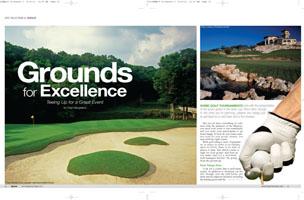
Some golf tournaments end with the presentation of the green jacket or the silver cup. More often, though, in the ones you're planning, players are happy just to get back to a cold beer and a hot shower.
But you do have something in common with the planners of the Masters: you need your event to run seamlessly, and you want your participants to go home happy. So how do you create a perfect event for your group? Answer: you start with the right course. With golf riding a wave of popularity (it makes its debut as an Olympic sport in 2016), there is no lack of places to play. But which course is right for your group? And how do you make sure it's a well-built, well-managed facility? By going from the ground up.
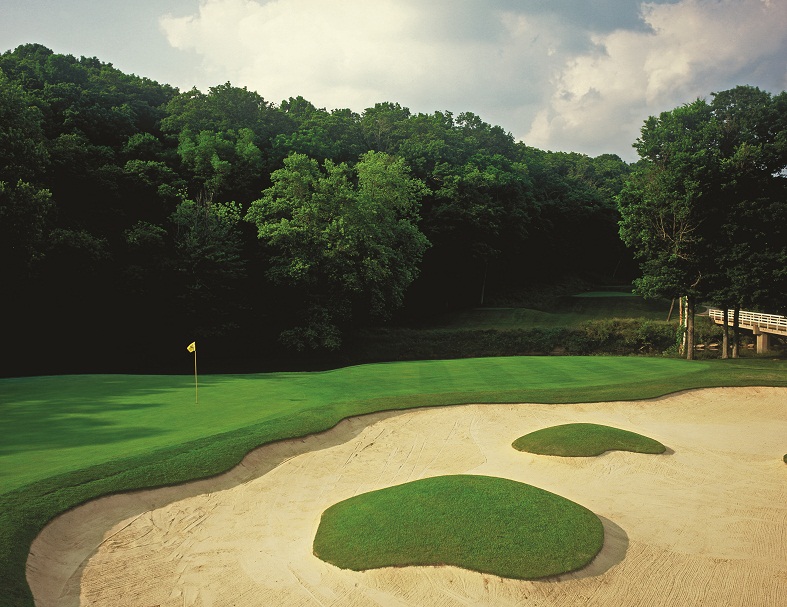 |
| Photo courtesy of the Louisville Convention & Visitors Bureau |
First Things First
Look for a course that is well-maintained. In addition to checking out the turf, though, visit the club house, pro shop and all adjacent facilities including the putting green and the driving range. Make sure the personnel are attentive and polite. Check the flow of guests for overly long lines in places like the pro shop or anywhere golfers will have to go to pick up rental clubs and so forth. Make sure cart paths are well-maintained and not pitted or cracked.
Find out how flexible the rules and policies are. Skill levels and individual abilities must be considered. Course managers and superintendents recommend checking to see whether a course is willing to work with special populations, such as children, first-time golfers (or just plain beginners), individuals with disabilities, those who wish to just ride along the course and watch the action, and more.
If your tournament will be holding events such as longest drive, closest to the pin, hole-in-one contest, etc., find out whether your staff, or the course staff, is responsible for administering these. Different courses, even those within the same city, may have different policies.
Find out if another golf event is already scheduled for the course on the same day, since that can cause confusion, crowding and other problems. And of course, have a rain date or some type of contingency plan or information system in case of inclement weather.
Incur good will: Work with the facility to draw up contracts that protect not just the interests of the planner and the golfers, but the facility as well.
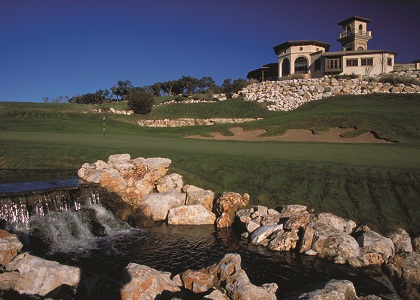 |
| Photo courtesy of Al Rendon - SACVB |
Types of courses
Choosing a course means understanding the various types of facilities golfers use. Courses are classified three ways: by ownership, length and setting.
The ownership of a course determines who can play there. Courses may fall into any of the following categories, or they may combine aspects of two or more categories. Those a meeting planner will probably encounter:
· Private: (in which only members of the club, organization or community can play, although a member may bring guests)
· Semi-private: (a facility that is only open to the public on certain days or at certain times)
· Public (owned by a private organization or a civic organization). Open to anyone who pays greens fees).
· Municipal (owned by a city, town, etc.) Open to anyone who pays greens fees.
· Resort (owned by a resort or hotel) Accessibility varies; some resorts restrict facilities to guest use, some may sell memberships, and some are open to the public.
· Military, University/College and Corporate: These facilities are built for specific users: the military, students/faculty members or company employees. Users generally can bring guests. Facilities may be open to the public or may accept membership.
· Residential/Community (owned or managed by a community or a community association, and generally used only by residents and their guests).
As a side note, many of the above courses may also operate on a daily fee, or pay-as-you-play basis.
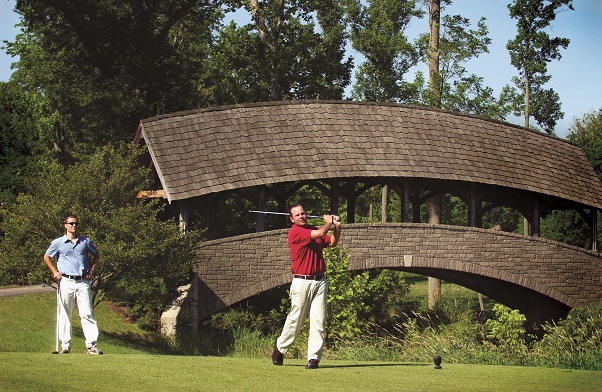 |
| Photo courtesy of the Louisville Convention & Visitors Bureau |
One quick note: It's easy to gravitate toward the most prestigious course available, or even to the least expensive, but both of those extremes can cause problems. Know your players and their attitude toward the game. Is it recreation or competition for them? This will make a difference in the way they approach the day, and of course, will help determine the course that you ultimately choose. A pro-am event, for example, will demand a higher level of facility than a more laid-back corporate event or a community benefit.
Courses are also categorized by length. Shorter courses might include par three or executive courses, but competitive tournament play usually takes place on a championship course. Championship courses, for example, are of an overall length and quality that would provide a suitable challenge to a skilled golfer; depending upon skill and attitude, a weekend duffer might not have as good an experience.
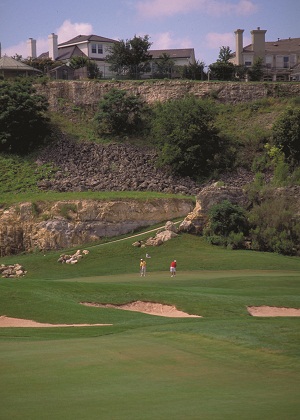 |
| Photo courtesy of Tim Thompson/SACVB |
Courses may also be classified by setting, including topography (which can determine the degree of difficulty of a golf course) as well as scenery:
· Links golf courses have rolling hills, no trees and expanses of open land. They are intended to resemble the courses in eastern Scotland where golf originated.
· Parkland courses have lush greenery, few trees and turf that is kept very short. (This is a popular type of course, and can be found in many states in the U.S.)
· Mountain, prairie, forest, desert and oceanside courses are examples of facilities classified by the views the golfer has while playing. In these courses, golf is played not in the mountains, on the beach, etc., but players can see these things around them. (The general topography and slope of the course, however, may reflect some of the surrounding land; for example, a prairie course is rather flat).
· Heathland courses have gentle slopes and low shrubs; they are designed to resemble the inland courses in England and Scotland.
· Downs courses have gentle slopes and long, flat stretches of grass; they are designed to resemble the English downs.
What else?
Because there are so many golf facilities and because the economy is tight, many courses work hard to attract event business. Reduced fees for groups, coupons for free buckets of practice balls, a circulating beverage cart, prizes, the onsite assistance of a golf pro and more are all examples of incentives.
Maybe your love of golf comes from years of playing. Maybe your acquaintance with the game simply comes from laughing at the antics of gophers, golfers and groundskeepers in "Caddyshack." Either way, you want the event you're planning to be a success for your players and, consequently, for you. The good news is that with the right amount of planning, you can score a hole in one.

